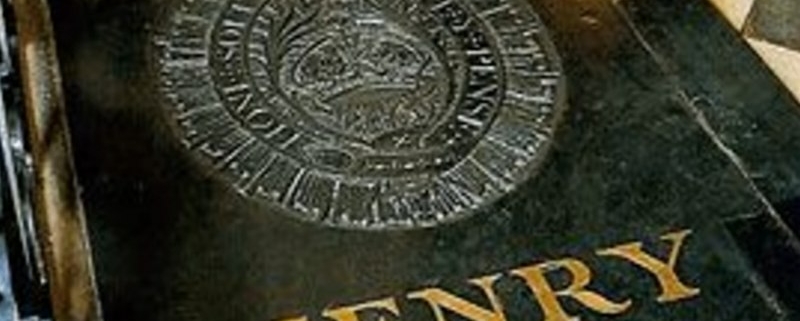King Henry VI – More Popular Dead Than Alive?
Dr James Ross, biographer of Henry VI, assesses the claim that Henry was “England’s Worst King” at 2.30p.m. at Gold Hill Museum, Shaftesbury, on Tuesday 10 January. Henry died in the Tower of London in May 1471, probably murdered on the orders of his Yorkist rival, King Edward IV. Henry was taken to Chertsey Abbey in Surrey to be buried …. not an appropriate burial site for a monarch: it was intended, presumably, to ensure his memory faded in this obscure abbey. If so, it failed. A cult to the king was already well established within two years of his death. (Ross, “Henry VI: A Good, Simple and Innocent Man”, p98)
In 1480 Edward tried to impose a ban on those “in going of Pilgrimage to King Henry” at Chertsey. In 1484 Richard III admitted defeat and had Henry moved to St George’s Chapel, Windsor, where he still lies opposite his Nemesis, Edward. Metal badges were made of Henry for pilgrims to buy. Almost 400 have been found, some in France. Henry’s nephew, Henry Tudor, pressed the Pope unsuccessfully on more than one occasion to canonise his uncle, who was credited with performing a total of 368 miracles posthumously. Some of these were quite local.
On 07 February 1486 Alice Newnett of Mere in Wiltshire apparently died of the plague. After a priest had administered the last rites, her grieving mother sewed Alice into her shroud, and the body lay for two hours on the ground. Suddenly Alice sat bolt upright. According to her, she had seen a vision of a holy man in dark silk and a gold crown, who promised to restore her to life on two conditions: one, that she lay in her shroud until he told her to rise; the other, that she make a wax candle as tall as she was and deliver it to the tomb of King Henry VI at Windsor. (Lauren Johnson, BBC History Magazine, February 2021)
Richard Beys, the victim of a profound miscarriage of justice, was hanged at Salisbury on 23 February 1484. He too had a vision of a tall figure royally dressed in a blue velvet gown, accompanied by the Virgin Mary. While Mary held up Beys’s body with her hands under his feet, the grey-haired royal figure had slipped his hand between the noose and Beys’s neck, thus preserving him from strangulation …. Beys travelled to Henry’s tomb to report his miracle and give thanks, leaving there the noose that had hanged him. (Lauren Johnson, “Shadow King: the Life and Death of Henry VI”, p546)
Dr Ross’s talk is free to members of The Shaftesbury & District Historical Society and open to the public on payment of £3 at the door.



